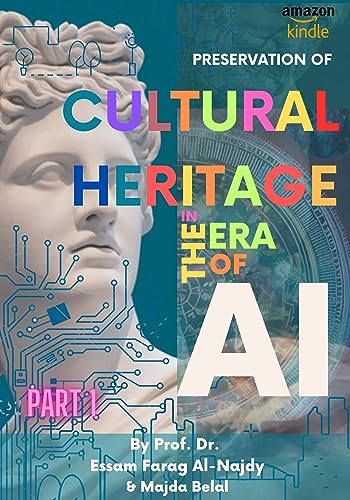The Evolution of Language Translation
Language has always been a tool for humans to share thoughts, emotions, and ideas. Throughout history, various methods have been employed to overcome language barriers, including manual translation, interpreters, and even machine translation. However, the advent of artificial intelligence has revolutionized the way we bridge linguistic gaps.
AI and Natural Language Processing
At the heart of AI-powered language translation lies Natural Language Processing (NLP). NLP is a subfield of AI that focuses on enabling computers to understand, interpret, and generate human language. It involves training machines to recognize patterns in language, syntax, and semantics, making it possible for them to translate text or speech from one language to another.
NLP has come a long way, thanks to advancements in deep learning, neural networks, and massive datasets. Today’s translation models, such as Google Translate, Microsoft Translator, and DeepL, are powered by sophisticated neural networks that have been trained on vast amounts of multilingual text. These models can handle a wide range of languages, from commonly spoken ones like English, Spanish, and Mandarin, to less widely spoken languages and dialects.
Benefits of AI-Powered Language Translation
The integration of AI-powered language translation into our daily lives has brought about several remarkable benefits:
- Instant Communication
One of the most significant advantages of AI-powered translation is the ability to communicate with people around the world in real-time. Whether you’re chatting with a friend from another country or conducting business negotiations with international partners, AI translation services like chatbots and apps can facilitate seamless conversations.
- Breaking Down Language Barriers
AI-powered translation is not limited to popular languages; it can also translate less common languages, dialects, and even sign languages. This inclusivity is a game-changer for connecting with diverse communities and ensuring that no one is left behind due to language barriers.
- Enhancing Cross-Cultural Understanding
AI translation technology allows us to explore and understand the cultures, literature, and ideas of different societies. It opens up a world of knowledge that was previously locked behind language barriers, fostering cross-cultural understanding and promoting tolerance.
- Boosting Global Business
For businesses, AI-powered translation is a game-changer. It enables companies to expand into new markets with ease, as they can provide their products and services in multiple languages. This not only broadens their customer base but also enhances their global reputation.
How AI Translation Works
Behind the scenes, AI-powered language translation relies on complex algorithms and neural networks. Here’s a simplified overview of the process:
- Data Collection: AI translation models require vast amounts of text data in multiple languages. This data is collected from various sources, including books, websites, and documents.
- Preprocessing: The collected data undergoes preprocessing to clean and structure it. This step involves removing irrelevant information, formatting text, and tokenizing words.
- Training the Model: Neural networks are trained using this preprocessed data. They learn the relationships between words and phrases in different languages, allowing them to understand context and grammar.
- Translation: When you input text or speech into an AI translation system, it goes through a process of encoding and decoding. The system encodes the input language into a numerical representation, translates it into the target language, and then decodes it back into human-readable text.
- Post-processing: To improve the translation’s quality, post-processing steps are often applied. These may include grammar checks, context analysis, and smoothing out the translation for fluency.
Challenges and Limitations
While AI-powered language translation has made significant strides, it’s not without its challenges and limitations:
- Contextual Understanding: AI models sometimes struggle with understanding context, which can lead to inaccuracies in translation, especially in languages with complex idiomatic expressions.
- Rare Languages: Although AI can handle many languages, there are still languages and dialects with limited resources and data. This poses a challenge for accurate translation in those cases.
- Cultural Nuances: Understanding cultural nuances and sensitive topics can be tricky for AI, as these aspects often rely on cultural context that may not be apparent from the text alone.
- Security and Privacy: Transmitting sensitive or confidential information through AI translation services can pose security and privacy risks, as data may be stored or intercepted during the translation process.
The Future of Language Translation
The future of AI-powered language translation is promising. As technology continues to evolve, we can expect:
- Improved Accuracy: AI models will become better at understanding context and nuances, resulting in more accurate translations.
- More Language Inclusion: Efforts to include underrepresented languages and dialects will continue, ensuring that AI translation benefits all communities.
- Enhanced Multimodal Translation: AI will not be limited to text but will also translate spoken language, sign language, and even visual content like images and videos.
- Personalization: AI translation systems will become more personalized, adapting to individual language preferences and learning from user interactions.
Conclusion
AI-powered language translation has come a long way in breaking down language barriers and fostering global communication. With the continued development of AI and Natural Language Processing, we can look forward to a future where language is no longer a barrier to understanding and connecting with people from diverse backgrounds. As technology advances, we’ll witness a world where communication is truly universal, transcending linguistic boundaries.
In this rapidly changing landscape, AI-powered language translation is undoubtedly one of the most exciting and impactful innovations of our time. It not only enhances our ability to communicate but also enriches our understanding of the world and its diverse cultures. So, let’s embrace this technological marvel and continue to bridge the gaps that language once created.





